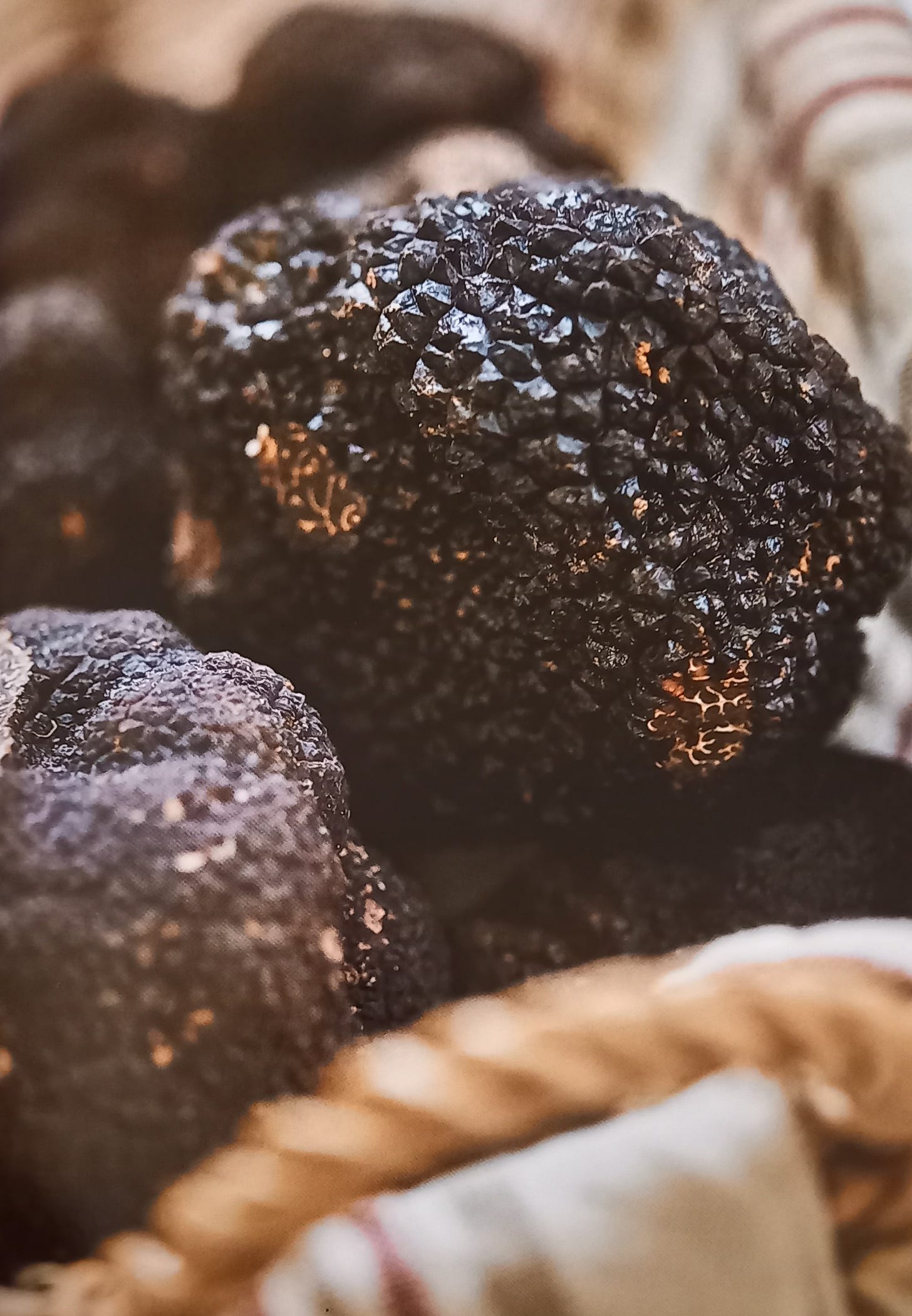A new truffles treasure trove?
A recipe for a truffle omelette
The citizens of the Périgord in South West France are justly proud of their truffles, known informally across the département of the Dordogne as black diamonds. Woe betide anyone who might suggest that the white truffles of the north Italian town of Alba are superior.
But if you go by the prices those fetch, it’s hard to dispute which type of truffle is the more revered. In a good year, the average cost per kilo of the Périgord’s Melanosporum weighs in at $721.25, while the Italian Tuber magnatum, the so-called truffles of the white Madonna, are so rare that in good condition they can fetch up to $10,500 a kilo. Even following a poor harvest, at last year’s late autumn festival they were selling for $6000 a kilo. In a prolific year, their lowest average price is more than $2000 a kilo.
In 2016 in Philadelphia, a truffle auction took place over global live simulcast at which a white truffle selling in Italy and weighing in at over 1.15 kilos, was the star. The winning bid came from Dong Xhenxiang, chef-owner of Da Dong Roast Duck in Beijing. He paid $112,000 for it. Given an Alba white truffle has a shelf-life of about 7 days, he would have had to use it fast. He admitted he wasn’t going to add it to his menu. He was going to guzzle it all himself.
The largest truffle in the world, of a lesser quality, was also from Alba and weighed in at 1.88kg. It, too, was sold at auction, by Sotheby’s in New York for $61,000.
But French truffle growers can now take heart. Big bucks may soon be coming their way, too. In July, scientists from INRAE, France’s National Research Institute for Agriculture, Food and the Environment, revealed that somewhere secret in Nouvelle-Aquitaine, 26 white truffles have been successfully cultivated
Over 90 percent of the Périgord’s black truffles are cultivated. But producers have struggled to farm the rarer white. At the institute, two hard years passed with feeble harvests before this bumper crop. The lead mycologist of the project, Dr Claude Murat, confirmed that the truffles could now be considered as established. In cultivating black truffles, producers expect only a few truffles to begin with before a quick increase by the second or third harvest. Apparently, the French white truffle has just behaved the same way.
Back in the 1970s, French scientists worked out how to successfully inoculate oak trees with truffles, establishing the Périgord as prime providers of the black variety. But the method failed with the more lucrative white truffles despite working on half a million seedlings in plantations in France, Italy and Spain. After nearly 20 years, only a few truffles were found.
It’s been a long journey to achieve this harvest of 26 in France. It began back in 1999, with oak trees that had been genetically linked with Italian white truffles and whose seedlings were then planted out from 2008 on.
Of the 52 oaks planted in 2015, 12 have produced truffles - three truffles in 2019, four in 2020 and suddenly in 2021 the twenty six which together weighed around 900g.
So white truffles may be appearing at the truffle markets of the Périgord sometime in the future, which will be of increased financial benefit to the local economy which is suffering from the pressure to ban foie gras production, and an added fillip for local chefs, cooks, and diners.
Black Périgord truffles can be cooked but white Italian truffles should be eaten raw. If you are lucky enough to own a truffle of any colour, treat it as simply as possible. You can stretch it by grating it through the large holes on a cheese grater and mashing it into a quantity soft butter you’ve placed on a sheet of parchment paper. With the help of the paper, roll the butter into a sausage shape and freeze it, well wrapped. When you want to use it, heat a sharp knife in boiling water, slice off circles as you need them to melt over a steak or some steamed vegetables, or in a buttery potato puree. Or grate it generously over a dish of fresh pasta cooked al dente, or shave it over an omelette.
2 room-temperature eggs per person
6 fine slices of truffle
Walnut-sized lump of unsalted butter
1 tablespoon oil, light olive or truffle
Finishing salt
An omelette for one should not contain fewer than two eggs or more than four. If you’re making them for more than one person, you’ll need to repeat the process. Whip them together with a teaspoon of cold water. Add whatever scraps and tailings of truffle you have. Put a nugget of unsalted butter into a heavy-bottomed frying pan over medium-low heat to melt then add a tablespoon of light olive oil or truffle oil and swirl. Pour in the eggs and swirl to cover the pan. As they begin to set, keep drawing them to the side with a spatula, tilting the pan to let the runny egg fill the bottom. Once they have just set, remove from the heat, shake the pan to ensure the base is not sticking, season with salt and pepper, then add the first three slices of truffle. Fold the omelette in two then add three more slices on top before serving, sprinkled lightly with a finishing salt. Don’t add salt to eggs before cooking them as it toughens them.





